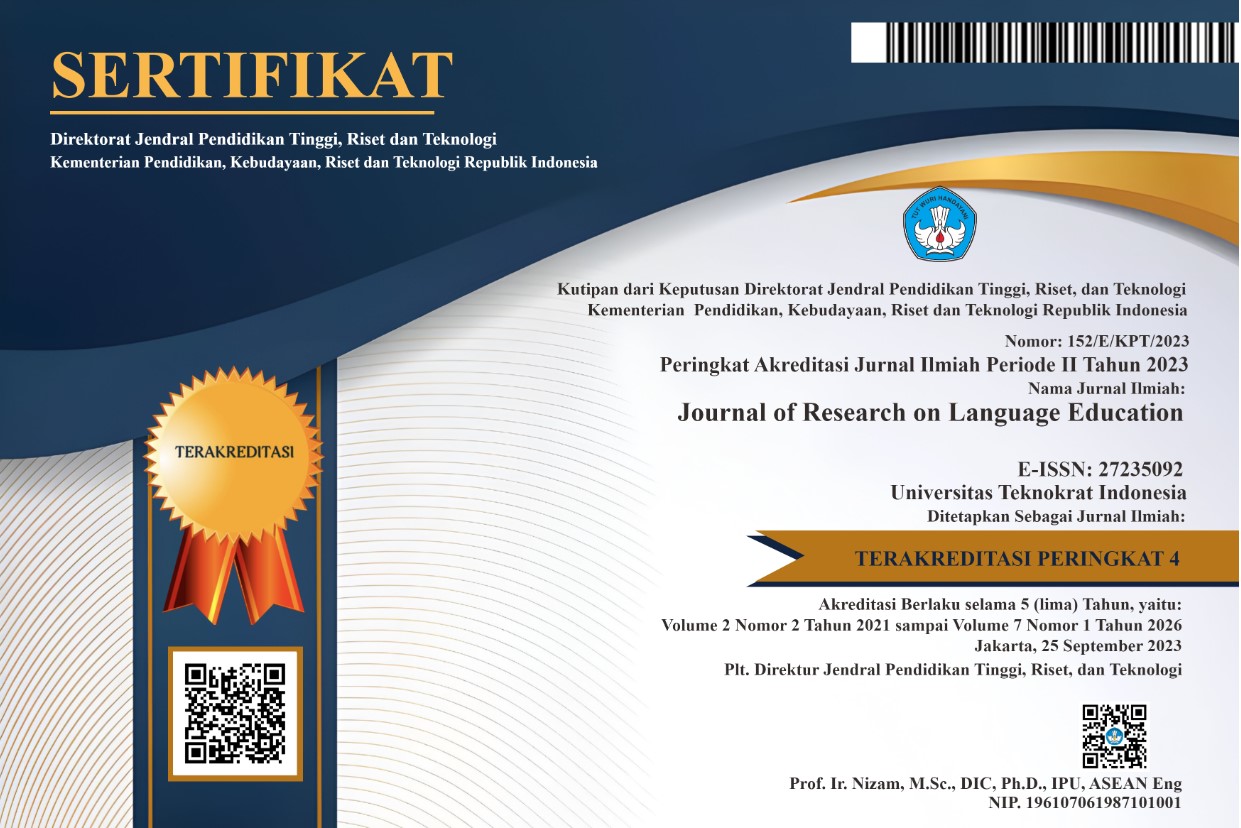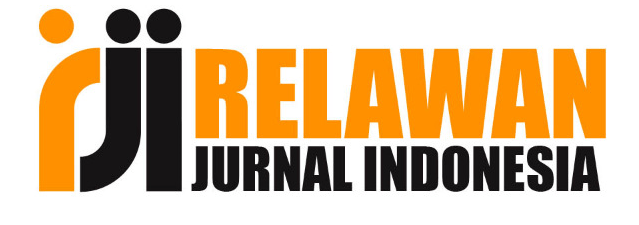“APPROACH IS MERELY A LENS…”: A STYLISTIC ANALYSIS OF LITERATURE CLASSROOM DISCOURSE
Abstract
Keywords
Full Text:
PDFReferences
Agu, I. Ejimofor. 2015. A Linguistic-Stylistic Analysis of Newspaper Reportage. Journal of Language and Communication Vol. 2, No. 2, 2015, 65-73.
Ayeomoni, M. Omoniyi. 2005. A Linguistic-Stylistic Investigation of the Language of the Nigerian Political Elite. Nebula Vol. 2, No. 2, 2005, 153-168.
Bradford, R. 2005. Stylistics. London and New York: Routledge.
Crystal, D. & Davy, D. 1969. Investigation English Style. London: Macmillan Press.
Djojosuroto, K. 2004. Prinsip-Prinsip Dasar Penelitian Bahasa dan Sastra. Bandung: Nuansa.
Flood, J., Lapp, D., Squire J. R. Jensen J. M. 2005. Methods of Research on Teaching the English Language Arts: The Methodology Chapters from The Handbook of Research on Teaching the English Language Arts. Second Edition. New Jersey: Lawrence Erlbaum Associates.
Flowerdew, J & Miller, L. 1996. Lectures in a second language: Notes towards a cultural grammar. English for Specific Purposes 15 (2): 121-140.
Freeman, D. (2001). Second language teacher education. In R. Carter & D. Nunan (Eds.). The Cambridge guide to teaching English to speakers of other languages (pp. 72-79). Cambridge: Cambridge University Press.
Glucksberg, S. 2001. Understanding Figurative Language: From Metaphor to Idioms. New York: Oxford University Press.
Huddleston, P and Unwin, L. 2002. Teaching and Learning in Further Education Diversity and Change. Routledge: New York.
Karanja, J. K. 2015. A Linguo-Stylistics Analysis of Newspaper Reporting of ICC Cases in Kenya: A Case Study of the Daily Nation and the Standard. International Journal of Research in Humanities and Social Studies Vol. 2, No. 8, 2015, 20-27.
Kovecses, Z. 2002. Metaphor: A Practical Introduction. New York: Oxford University Press.
Leech, G. 1968. A Linguistic Guide to English Poetry. Edinburgh: Longman.
Leech, G. & Mick S. 2007. Style and Fiction: A Linguistic Introduction to English Fictional Prose. Second Edition. Edinburgh: Longman.
Nnadi, I.C. 2010. A Linguistic Stylistic Analysis of Chukwuemeka Ike’s Novels. Jos: University of Jos.
Puspita, A. F. 2014. A Stylistic Analysis of Figures of Speech in Les Miserables Movie. Yogyakarta: Yogyakarta State University
Perrine, L. 1969. Sound and Sense. An Introduction to Poetry. Third Edition. New York: Harcourt, Brace & World, Inc.
Simpson, P. 2004. Stylistics: A Resource Book for Students. London and New York: Routledge.
Patton, M. Q. 2002. Qualitative Evaluation and Research Methods. (Third Edition). Thousand Oaks, CA: Sage Publications, Inc
Verdonk, P. 2002. Stylistics. Oxford University Press.
Wrench, Richmond & Gorham, 2009. Communication, Affect & Learning In The Classroom. USA : Tapestry Press.
Wright, L, and Jonathan H. 2005. Stylistics: A practical Course book. New York: Routledge.
Zhang, Danhui, "The Effects of Teacher Education Level, Teaching Experience, And Teaching Behaviors On Student Science Achievement" (2008). All Graduate Theses and Dissertations. Paper 155.
Znamenskaya, Т. A. 2004. Stylistics of the English Language. Москва : В э Г У
DOI: https://doi.org/10.33365/jorle.v4i2.3315
Refbacks
- There are currently no refbacks.

This work is licensed under a Creative Commons Attribution-NonCommercial-ShareAlike 4.0 International License.

Articles published in Journal of Research on Language Education is licensed
under a Creative Commons Attribution-ShareAlike 4.0 International License.
English Education Study Program, Faculty of Arts and Education.
Universitas Teknokrat Indonesia
Zainal Abidin Pagaralam 9-11 Bandar Lampung, Indonesia
All rights reserved.








